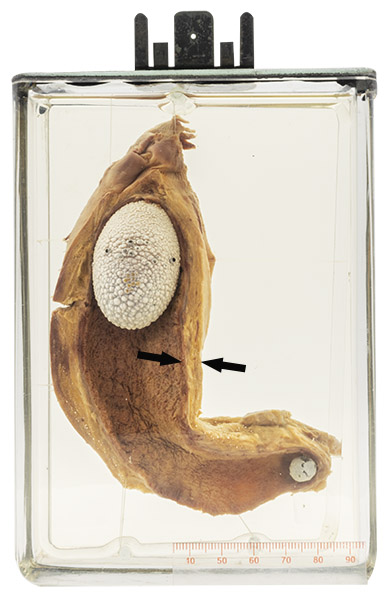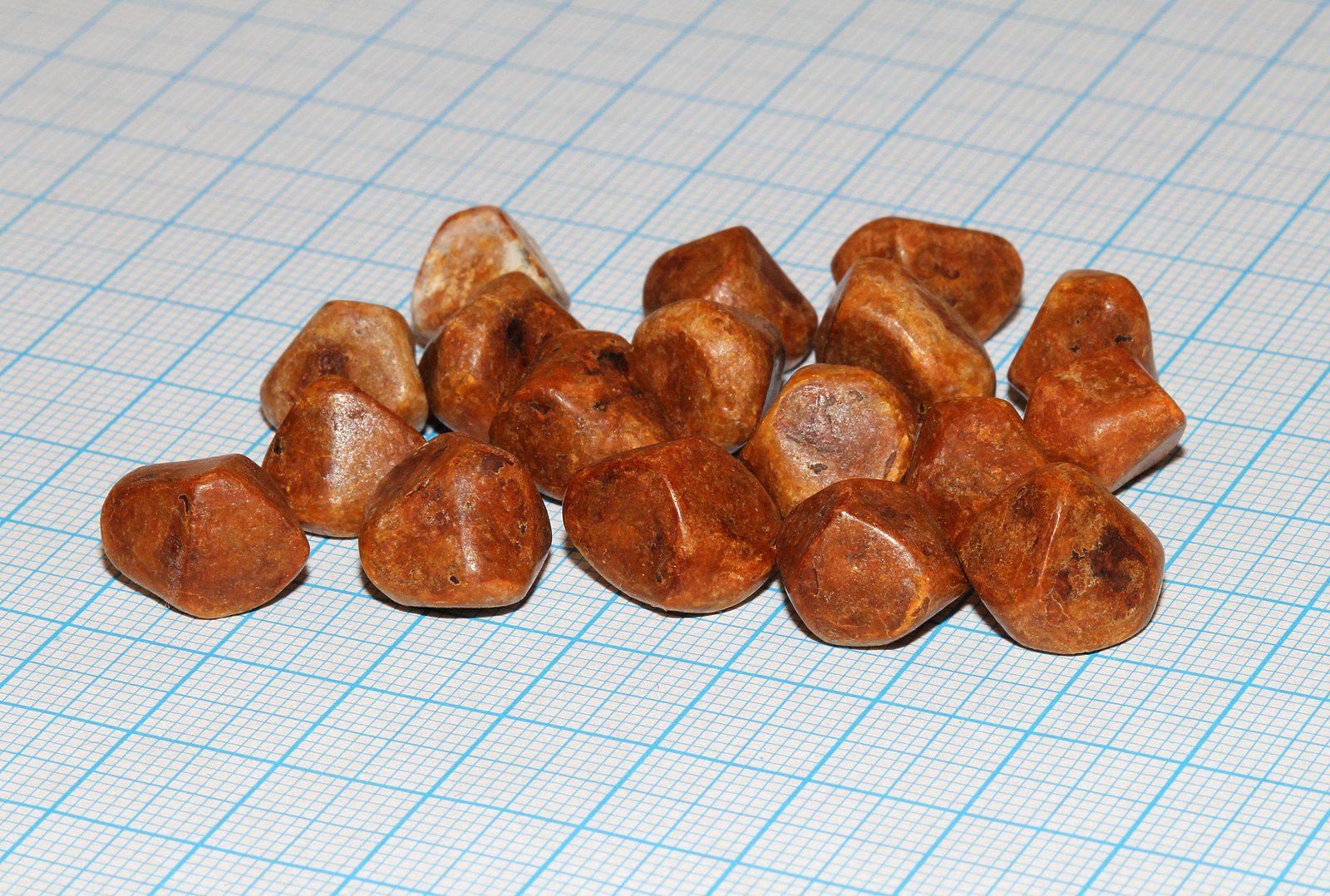

Age/sex: 54-year-old female
Size: 16.2 x 11.4 x 5.0 cm
The gallbladder has been opened to show two stones. The larger one is in the fundus and the smaller one is at the opposite end near the origin of the cystic dust that drains bile into the common bile duct (not present in the specimen). The smaller stone completely fills the lumen, resulting in obstruction of bile flow into the common bile duct. This has led to fibrosis and inflammation of the gallbladder wall (chronic cholecystits), indicated by its thickening (arrows).
Gallstones
Gallstones are more or less round, usually hard structures formed in the gallbladder. They range in size from 1 mm to as large as 5 cm. There are three main types based on their biochemical composition:
- cholesterol, about 10 - 20 % of stones, typically solitary or few in number and oval in shape (as in this case);
- pigment, about 5%, composed predominantly of the red blood cell breakdown product, bilirubin; these are often small, numerous and black;
- mixed, about 75 - 85%, composed of a variety of substances, including cholesterol, calcium carbonate, and bilirubin; these are usually multiple, often angulated and variable in color.
Most gallstones cause no symptoms (cholelithiasis). Sometimes - often one or two hours after a meal - they are associated with pain or discomfort in the right upper abdomen (biliary colic). Occasionally, they cause inflammation of the gallbladder (acute cholecystitis), in which case the pain is usually more severe and associated with fever. Although such episodes can resolve by themselves, the inflammatory reaction can be maintained for months or years leading to chronic cholecystitis. Sometimes, acute inflammation progresses and is associated with rupture of the gallbladder with potentially serious consequences (see Specimen 54).
Below: Mixed type gallstones removed from a single patient.
Source: Chernilevsky, G. (2015). Human gallstones 2015. Wikimedia Commons. https://commons.wikimedia.org/wiki/File:Human_gallstones_2015_G1.jpg
